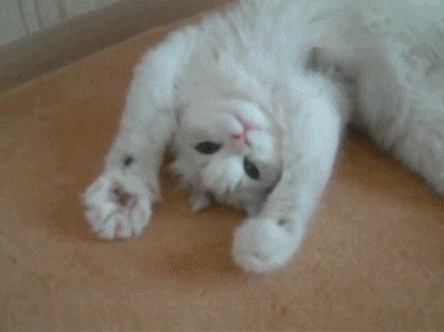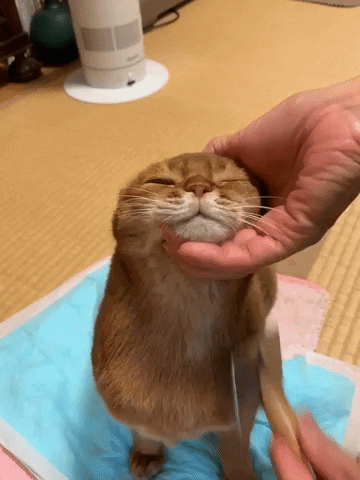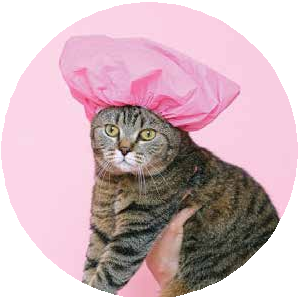So you get a puppy and feed, bathe and take care of all its needs n wants and it looks at you and thinks ”Wow! This guy must be a god!”. Do the same with a Cat and it thinks, ”Wow! I must be a God!” 😀
Jokes aside, like with all pets, owning a cat in India can be a rewarding experience, but it also comes with responsibilities, pitfalls and other issues. While we have seen live evidence demonstrating that they can be trained, Cats aren’t like dogs in most ways that matter to us. But that doesn’t mean they don’t make wonderful and entertaining pets. It is argued that Cats take far less attention and maintenance than Dogs. We at TGP will take a neutral stance on this, Thank you.
Both Cats and Dogs make wonderful companions, providing affection, entertainment, and elevating our lives in very different ways. There is also enough to show us that having one, by no means, precludes the other. Cats and Dogs can live happily together, and one does not have to make a choice between the 2 of being a Cat or Dog Person. The internet abounds with examples so numerous it can’t be an unusual thing. 😀
So here’s an introduction to cat ownership in India.
Choosing the Right Cat

Consider adopting a cat from a local shelter or rescue organization. Or even pick up a kitten from the street should you find one.
Cat Breeds exist and if you’re interested in a specific breed, research to find one that suits your lifestyle and health. Exotics of any species tend to be costly to acquire and maintain.
In any case the variations that exist in dog breeds due to millennia of selective breeding does not in cats and apart from aesthetic differences, most domestic cat breeds are largely similar because they have not been domesticated or selectively bred for as long as Dogs have. Of course, when you choose, take into account the climate the species has evolved for. Maine Coons and Malamutes are both high maintenance breeds to keep.
This also means there is some randomness in factors such as allergens and shedding and the individual variations in behaviours are less predictable than they are for dog breeds. You won’t need to take them out to relieve themselves or get exercise.
Basic Care

- Differences aside, a kitten requires the same or higher level of attention and care than a puppy would at least in the initial days.
- Deworming, vaccinations, spaying/neutering are the basic necessities and incur costs starting at 7-10k in most cities.
- Kitten proofing your home can be an exercise even more complex than puppy proofing because Cats climb things. Windows will need netting if you live on a higher floor for example.
- Prepare for some destruction. Even kittens have claws and love to scratch. Not just inanimate objects so keep disinfectant and Band-Aids handy. The behaviour will pass.
- Adequate hydration. Keep little bowls/saucers of water around and slowly reduce the number and centre on one location.
- Provide soft bedding in the same location and if possible in a spot with some privacy.
And oh, be prepared for a little bit of chaos. Kittens have claws, and they’re not afraid to use them
Nutrition

- Provide a balanced and nutritious diet. Consult with a veterinarian to determine the best food for your cat’s age, health, and size.
- Feed on a schedule, 2-3 times a day and remove the food if uneaten for 30mins.
- Unless you can take the time and effort to balance out their meals with the right proportion of meat/protein etc, packaged food is both well balanced and not expensive. Unlike dogs, cats are Obligate Carnivores. They NEED meat to survive.
- Exclude Dairy. Yes, adult cats are often lactose intolerant.
- Also exclude alcohol, onions, onion, garlic, chocolate, coffee or caffeine products, avocado, anything with gluten or yeast, grapes/raisins, berries, nuts, tomatoes, mushrooms, cooked bones, fatty trimmings/fatty foods, salt and roughly-cut vegetables. NOT a complete list, of course.
Healthcare

- Regular veterinary check-ups are crucial. Vaccinations and preventive care are essential.
- Desexing/Neutering is arguably more important in Cats than Dogs, because of the level of independence they have. It reduces roaming and keeps them safer, reduces territorial marking and also fighting.
- Regular parasite control is a part of both healthcare and grooming. However cats also tend to get internal parasites like worms and will need regular deworming.
Grooming

- Adult Cats groom themselves for the most part. However in dusty urban environments it may be necessary to bathe your cat once in a while. Of course train them early for it because they tend to find it stressful.
- Longer haired cats may require brushing to keep them clean and stem the shedding a little. invest in a good brush (and maybe some Band-Aids).Train early for this as well with positive reinforcement and make it a bonding ritual.
- Tropical climates like India have a higher prevalence of fleas and other ectoparasites. Prepare for it by regular checks, grooming and anti-flea solutions.
- Do not trim your cat’s hair or claws unless there is a vet advised medical requirement.
Training and Behaviour Managment

Cats can and do need to be trained as well.
- Cats need social interaction. Possibly not as much as Dogs do but spending quality time with your kitten is important. Don’t go overboard with the ”independence”.
- Get a Litter Box. Cats usually self-litter-train. One of their many advantages. Provide a clean and easily accessible litter box in a quiet location close to where you have put their bedding and food/water. But not too close.
- Environmental Safety and Enrichment: As we said before make your house, kitten and cat safe. For the cat as well as your things. They will climb, scratch, knock down, pull down to ”hunt and kill” that candy wrapper floating in the wind.
- Socialize early and habituate to humans and other animals as early as possible. Get them used to being touched n pet with positive reinforcement and reward.
- Provide scratching posts or pads to satisfy their instinct and protect your furniture. Modify behaviour with rewards when they scratch what they are meant to.
- They hunt, eat, groom, repeat. We’ve discussed the second 2. So how do we deal with the first? Simulate it by keeping your cat mentally and physically stimulated with toys and interactive play. Cats enjoy chasing, pouncing, and batting at toys because these are all hunting behaviours.
- Spend 2-3 30min intervals with your cat, playing and interacting to make them happily tired and less likely to wake you up at 2 am. Also for the bonding.
- If you allow outdoor access, micro chipping or some kind of tracking collar is advised. Desi Cats especially can have fairly large wandering ranges and can get lost.
There you have it; our basic introduction to Cat ownership! Of course this not exhaustive by any means, but it’s a start. Cat ownership can be as elevating and rewarding as Dogs or any other pet. And we dare say the basics of Cat ownership may take less physical effort that that puppy especially for the working people among us.
About the author: The author of this article is ‘The Good Paws’. We’re here to make the bad good, and the good, even better! from dirty toe beans to yummy treats, whatever the problem, or whatever the need, it’s all good! Every member is valued in our community.
Join our elite pet care circle on WhatsApp and become an exclusive member by clicking here https://bit.ly/44lcg2p!
Dear Pet Parents! Can we ask you for a tiny favor? Pretty please, subscribe to our blog below! Curating, writing, and vetting our blogs is a labor of love. Your support means the world to us!












